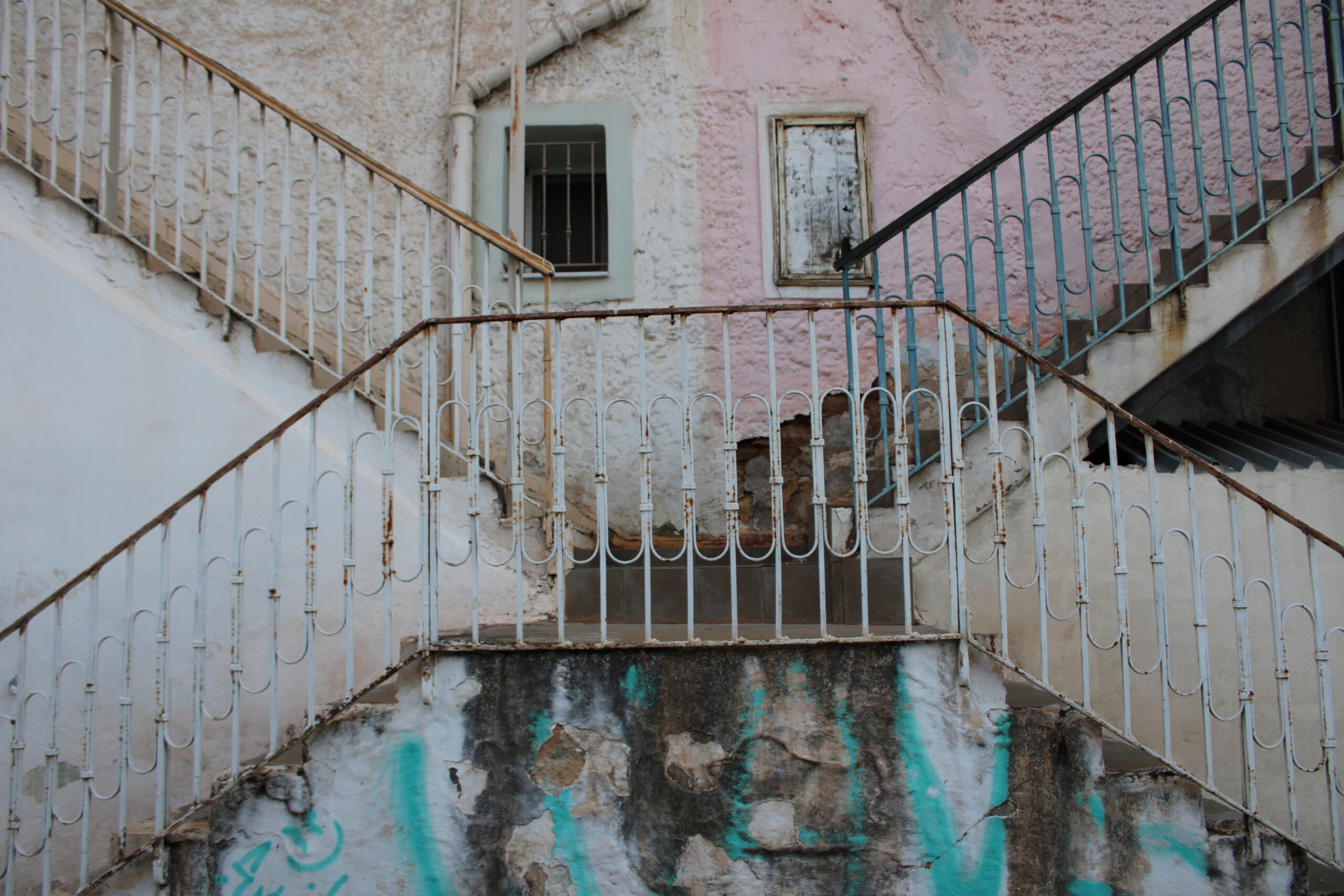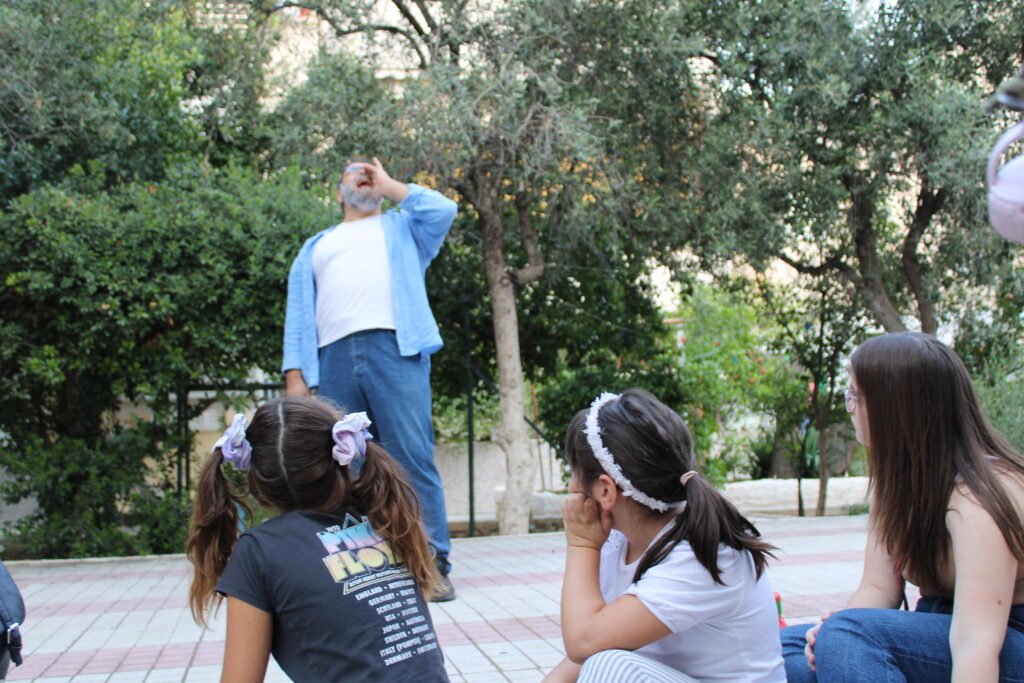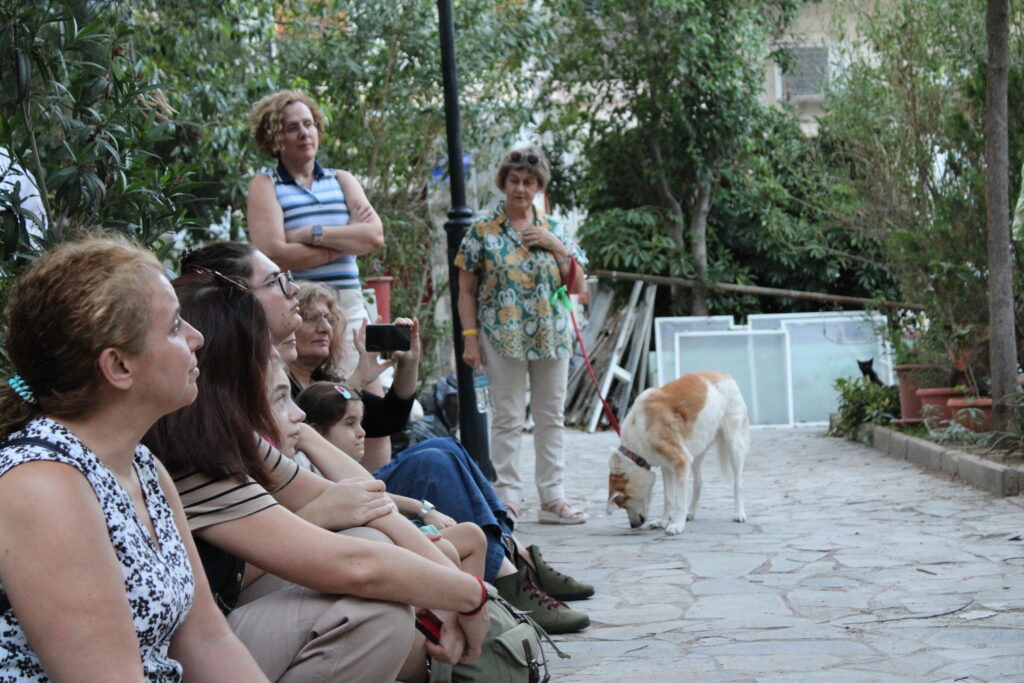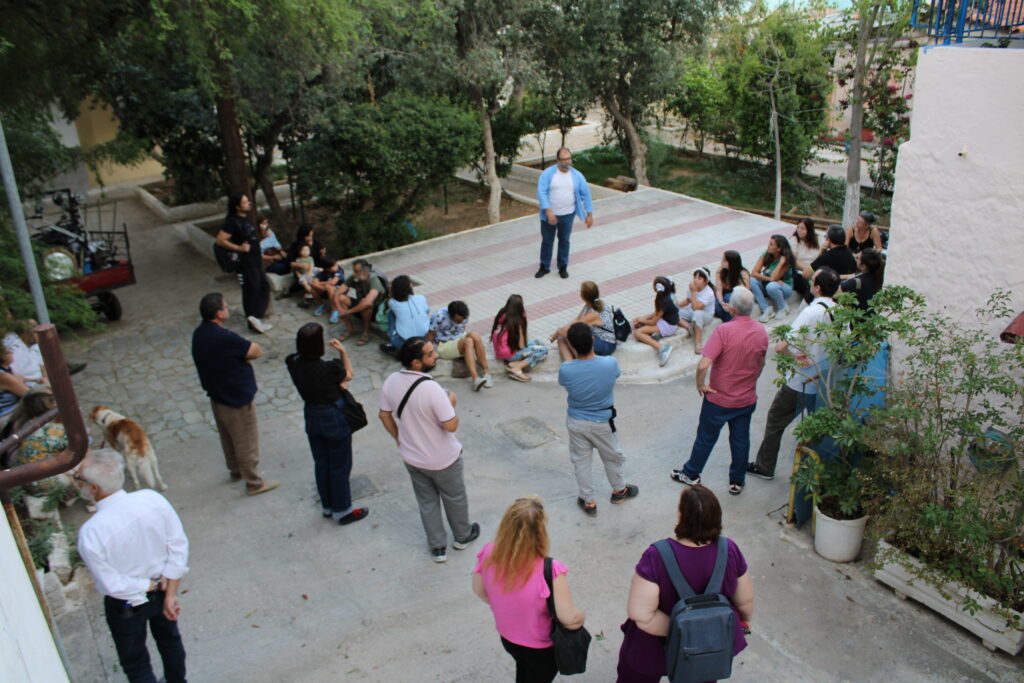(In)the footsteps of people – temporary exhibition in Nice
The research project 100memories completed its programme of public actions in Nikaia, on Saturday 30 September and Sunday 1 October 2023 with a walk and an ephemeral exhibition/performance.
In Nikaia the large Central Exhibition of the project was implemented, so the research team did something smaller to close the temporary actions. The site of the walk-through action was the refugee courtyards. The houses in the original refugee core of Nea Kokkinia were particularly small and each had its own private courtyard, where it was envisaged that it would become part of the house in later years as the family grew. But most of these houses at the back faced the common area of the block with plenty of open common space as well as a long building with toilets and a laundry room, the laundry as it was called. Most of the residents used the outside of their homes in their daily lives and socializing with neighbors was increased, as were problems at times. Today the laundries have been demolished but the inner courtyards of the refugee blocks still exist, surprisingly quiet and yet so different from each other. Some are particularly neat and well-kept, others more abandoned, but all have a strange geometry from the constant expansions of the refugee houses, their multiple uses (parking lots, gardens and improvised storage facilities) and the easy or more difficult coexistence of their inhabitants.
The feeling you get as a visitor to the courtyard is most often a bit of an “intruder” in a purely private space even if the space is public and the block’s residents are most often very polite, cheerful and very talkative with visitors. Usually the older residents of these yards have a different outgoingness than the younger ones, they spend more time in the yard, are more sociable with neighbors they have known for years, they immediately recognize the visitor and feel somewhat like “representatives” of the block with a duty to talk about the beauties and difficulties experienced by themselves and their parents, they forget the neighborhood relations that existed before and complain about the new realities and difficulties of life in these houses. They usually know the history of everyone who lived in the yard and have a detail to share with the “stranger” who came to their neighborhood.
In these yards the group designed a performance with storytelling. Dimitris B. Prusalis told Asia Minor fairy tales in the courtyards of the refugee houses of Nikaia. A tour through the crossroads of the collective imagination and the refugee neighborhoods of 1922, a meeting of intangible cultural heritage. Fairy tales as a souvenir of memory from the ancestral homes, a germ and seed of continuity – from the beginning – in the new homelands of refuge. In people’s backyards, the world is rebuilt through old breaths, suffering times and new dreams. Three courtyards, three stops, three narratives from the corners of the land of Asia Minor, Western Asia Minor, Cappadocia and the borderland of Pontus. The action aimed to activate the spaces of the courtyards, spaces liminal between private and public, past and contemporary life.



